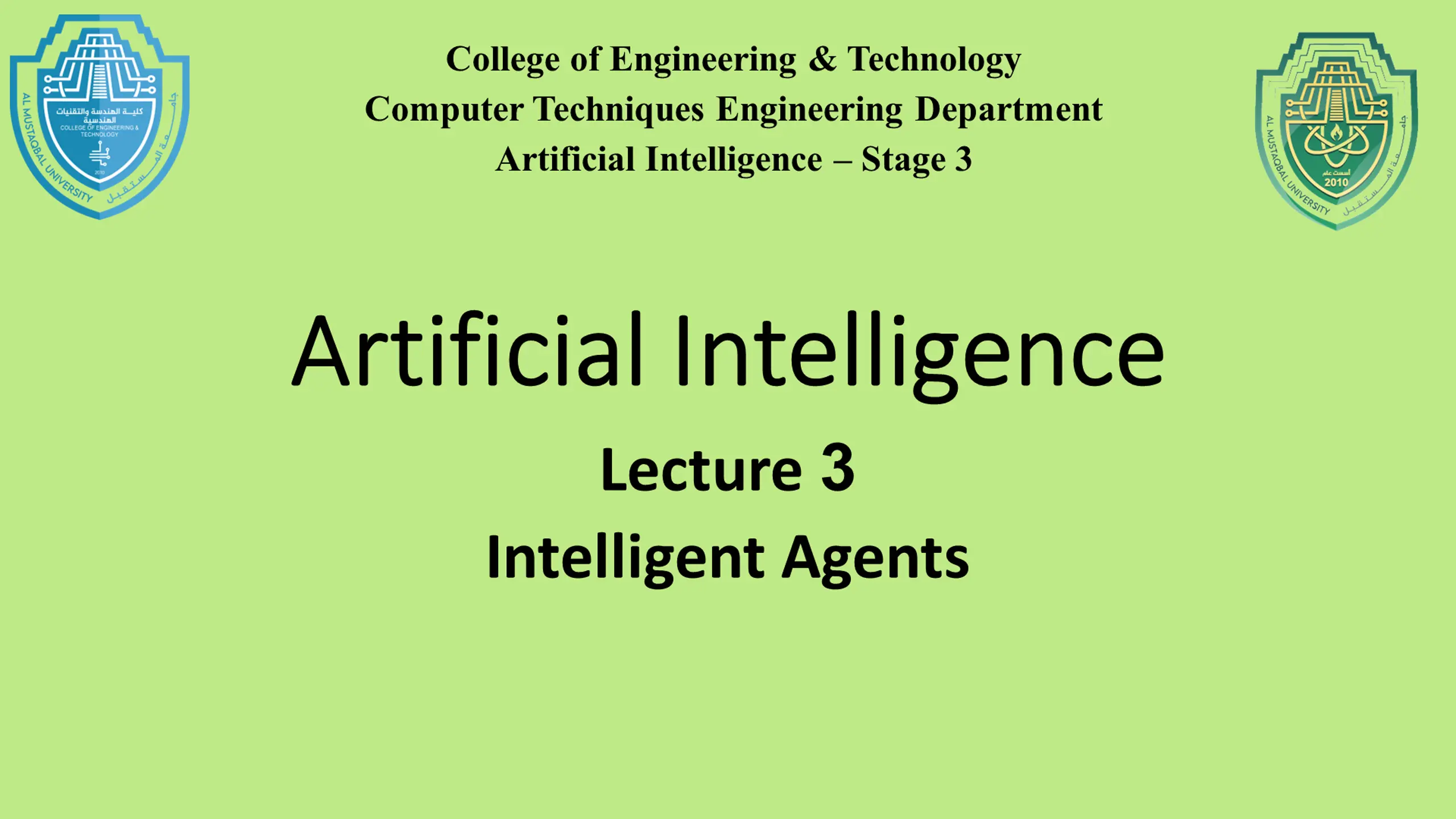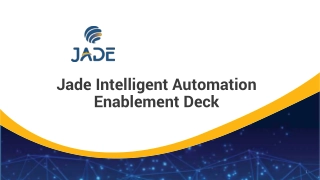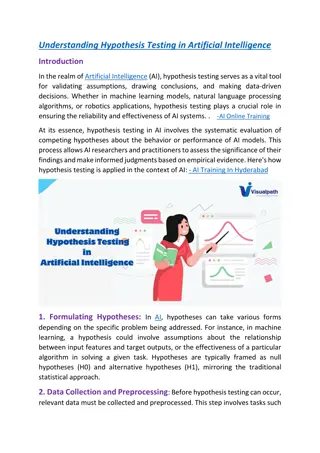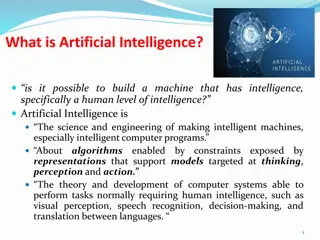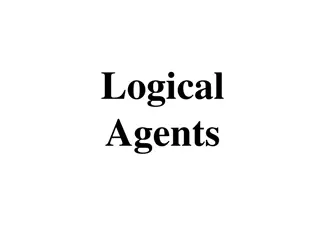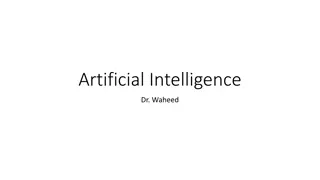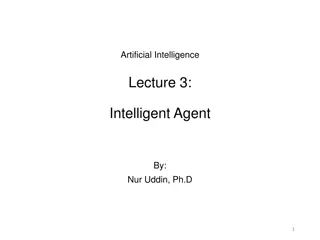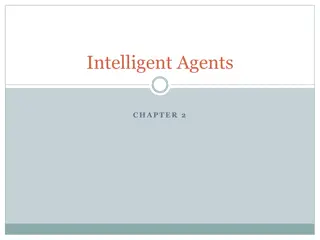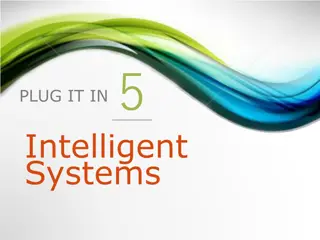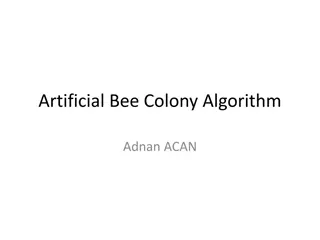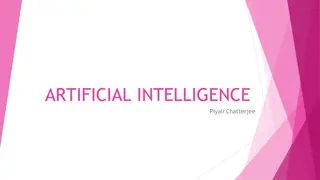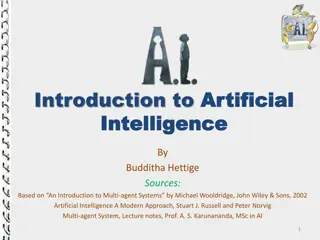Artificial Intelligence - Intelligent Agents
Understand the task environment and performance measures in designing intelligent agents. Explore the properties of task environments in AI.
Download Presentation

Please find below an Image/Link to download the presentation.
The content on the website is provided AS IS for your information and personal use only. It may not be sold, licensed, or shared on other websites without obtaining consent from the author.If you encounter any issues during the download, it is possible that the publisher has removed the file from their server.
You are allowed to download the files provided on this website for personal or commercial use, subject to the condition that they are used lawfully. All files are the property of their respective owners.
The content on the website is provided AS IS for your information and personal use only. It may not be sold, licensed, or shared on other websites without obtaining consent from the author.
E N D
Presentation Transcript
College of Engineering & Technology Computer Techniques Engineering Department Artificial Intelligence Stage 3 Artificial Intelligence Artificial Intelligence Lecture 3 Intelligent Agents
Task Environment? Task Environment? Task environment is the problem to which rational agents are the solutions. Task environment (PEAS) : Performance, Environment, Actuators, Sensors) Specify the task environment is the first step in designing an agent. The following figure is an example of automated taxi task environment.
Task Environment? Task Environment? Performance measure: desirable qualities include getting to the correct destination. 1. Minimizing fuel consumption and wear and tear. 2. Minimizing the trip time or cost. 3. Minimizing violations of traffic laws and disturbances to other drivers. 4. Maximizing safety and passenger comfort. 5. Maximizing profits Some of these goals conflict, so tradeoffs will be required
Task Environment? Task Environment? Environment: what is the driving environment that the taxi will face? 1. Variety of roads (rural lanes, urban alleys, 12-lane freeways) 2. The roads contain other traffic. 3. Pedestrians 4. Animals 5. Road work 6. Police cars 7. Puddles and potholes. 8. Passengers 9. Weather conditions.
Task Environment? Task Environment? Actuators: 1. Accelerator 2. Steering 3. Braking 4. Display screen (Talk back to the passengers) 5. Voice (Talk back to the passengers) 6. Way to communicate with other vehicles.
Task Environment? Task Environment? Sensor: 1. Cameras (see the road) 2. Infrared or sonar sensors to detect distances and obstacles 3. Speedometer 4. Global Positioning System (GPS) 5. Keyboard or Microphone for passenger to request destination.
Properties of task environments? Properties of task environments? The range of task environments that might arise in AI is vast. Therefore small dimensions along which task environments can be categorized. These dimensions determine the appropriate agent design. And the principle of techniques for agent implementation.
Properties of task environments? Properties of task environments? 1. Fully observable vs. partially observable Agent sensors give it access to the complete state of the environment at each point in time. Sensors detect all aspects that are relevant to the choice of action, relevance, in turn, depends on the performance measure. Agent need not to maintain any internal state to keep track of the world. Partially observable environment because of noisy and inaccurate sensors. Or part of the state are simply missing for the sensor data. For example: an automated taxi cannot see what other drivers are thinking.
Properties of task environments? Properties of task environments? 2. Single agent vs multiagent An agent solving a crossword puzzle by itself is clearly in a single-agent environment. An agents playing chess is in two agent environment. Competitive Multiagent Environment (Ex. Chess agent): the opponent entity B is trying to maximize its performance measure, which mean minimized agent A s performance measure. Partially Cooperative Multiagent Environment (Taxi driving): avoiding collisions maximizes the performance measures of all agents.
Properties of task environments? Properties of task environments? 3. Deterministic vs. stochastic. Deterministic if the next state of the environment is completely determined by the current state and the action executed by the agent. Otherwise, it is stochastic. Fully observable ------------------- Deterministic Partially observable ------------- Stochastic For example: Taxi driving is stochastic because one can never predict the behavior of traffic exactly.
Properties of task environments? Properties of task environments? 4. Episodic vs. sequential: Agent is divided into atomic episode Each episode the agent receive a percept and then perform a single action. The next episode does not depend on the actions taken in previous episodes. For example: agent that spot defective parts on an assembly line bases each decision on the current part, regardless of previous decision, and the current decision does not affect the part decision. On the sequential environments, current decision could affect all future decisions. Chess and Taxi driving are sequential. Episodic is simple than sequential because agent dose not need to think ahead.
Properties of task environments? Properties of task environments? 5. Static vs. Dynamic If the environment change while an agent is deliberating (preparing an action) then the environment is dynamic, otherwise it is static. Static is easy, agent not need to look at the world while deciding on an action. Nor need it worry about the passage of time. Dynamic environment, on the other hand, are continuously asking the agent what it wants to do. Taxi driving agent is dynamic. Crossword puzzles are static.
Properties of task environments? Properties of task environments? 5. Discrete vs. continuous: The discrete/continuous applies to the state of the environment, the way time is handled, the percepts and actions of the agent. For example : Chess has a discrete set of percepts and actions Taxi driving is continuous-state and continuous time problem. The speed and location of the taxi and other vehicles sweep through a range of continuous values smoothly over time.
The Structure of Agents? The Structure of Agents? The job of AI is to design an agent program that implements the agent function. Mapping from percepts to Actions The program run on computing device with physical sensors and actuator: Architecture agent = architecture + program
Agent Programs? Agent Programs? Agent program take the current percept as input for the sensors and return an action to the actuators. Agent program takes the current percept as input. The agent function takes the entire percept history. If the agents actions need to depend on the entire percept sequence, the agent will have to remember the percepts.
Agent Programs? Agent Programs?
Agent Programs? Agent Programs? To build an agent program in this way, must construct table that contains the appropriate action for every possible percept sequence Taxi driving agent for an hour of driving approximate ?????,???,???,??table entries. For chess would have at lest ?????entries. The table size lead to the following challenges 1. Storage limitation 2. Time to create table 3. Agent to learn the right entries 4. Guidance on how to fill table entries.
Agent Programs? Agent Programs? The key challenge for AI is to find out how to write program that produce rational behavior from smallish program rather than from a vast table. Square root table ------------------ five line program in any calculator
Basic Kinds of Agent Programs? Basic Kinds of Agent Programs? 1. Simple reflex agents: Take action on the baes of the current percept, ignoring the rest of the percept history. For example, in automated taxi: If car-in-front-is-braking then initiate-breaking
Basic Kinds of Agent Programs? Basic Kinds of Agent Programs? 2. Model-based reflex agents: The agent keep track of the part of the world it can t see. The agent maintain some sort of internal state depends on the percept history and reflects some of the unobserved aspects. The agent need information about how the work evolves independently of the agent. This knowledge about how the world work is called a model of the world. Agent uses such a model is called a model-based agent.
Basic Kinds of Agent Programs? Basic Kinds of Agent Programs?
Basic Kinds of Agent Programs? Basic Kinds of Agent Programs? 3. Goal-based Agents: The agent needs some sort of goal information that describes situations that desirable. For example the passenger destination, in the automated taxi. The agent combine information about the goal the model to choose action to achive the goal.
Basic Kinds of Agent Programs? Basic Kinds of Agent Programs?
Basic Kinds of Agent Programs? Basic Kinds of Agent Programs? 4. Utility-based agents: An Agent Utility Function is essentially an Internalization of the Performance measure
Learning agents? Learning agents? Learning agent can be divided into four components, as shown in figure below:
Learning agents? Learning agents? Learning element : responsible for making improvements. Performance Element: responsible for selection external actions. It takes in percepts and decides on actions. Critic: learning element used feedback from the critic on how the agent is doing and determines how the performance element should be modified to do better in the future. Problem generator: it is responsible for suggesting actions that will lead to new informative experiences. The problem generators job is to suggest these exploratory actions which may lead to discover much better actins for the long run.
Summary? Summary? An agent is something that perceives and acts in an environment. The agent function specifies the action taken by the agent in response to any percept sequence. The performance measure evaluates the behavior of the agent in an environment. A ration agent acts so as to maximize the expected value of the performance measure, given the percept sequence it has been so far. A task environment specification includes the performance measure, the external environment, the actuators and the sensors. In designing an agent, the first step must always be to specify the task environment as fully as possible.
Summary? Summary? Task environments vary along several significant dimensions. They can be fully or partially observable, single-agent or multiagent, deterministic or stochastics, episodic or sequential, static or dynamic, discrete or continuous, and known or unknown. The agent program implements the agent function. There exists a variety of basic agent- program designs reflecting the kind of information made explicit and used in the decision process. The designs vary in efficiency. Compactness, and flexibility. The appropriate design of the agent program depends on the nature of the environment.
Summary? Summary? Simple reflex agents respond directly to percepts, whereas model based reflex agents maintain internal state to track aspects of the world that are not evident in the current percept. Goal-based agents act to achieve their goals, and utility-based agents try to maximize their own expected happiness (utility) . All agents can improve their performance through learning.
Thanks for Your Attention Thanks for Your Attention
